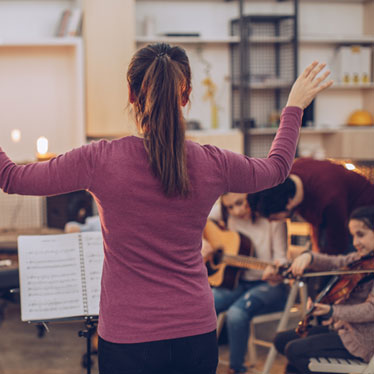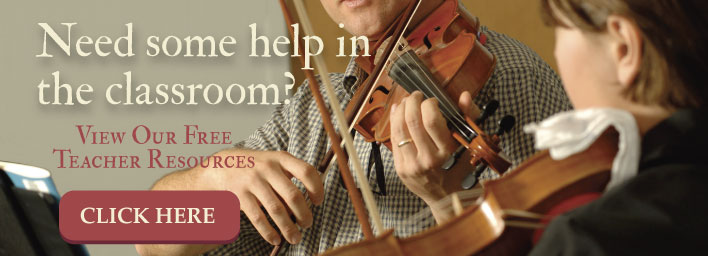5 Cool Tools For Music Educators In The Classroom

Looking for new and inventive ways to inspire – and deepen – your students’ experience? Some of the suggestions below are basic, and others are new and innovative, but all are cool tools that support music educators in their classrooms and music schools.
1. Video
Hearing yourself play, or hearing your part inside the section or orchestral whole, is one thing. Then there’s the sound that a certain section, or a few measures, make amidst the whole. Your phone’s video camera, and a projector that plays back the videos you’ve downloaded, give students the opportunity to listen and look at their work from a more objective position.
This idea should never, ever be made to shame or embarrass students – nor should it be used to point fingers. However, by reviewing themselves from the audience perspective, students can learn:
- Whether their bowing is in sync with their peers
- Notes or phrases that don’t sound as good as they thought
- That the fidgeting they’re doing during resting measures stands out like a sore thumb
Many of these issues will self-correct after a viewing or two. The ultimate goal is that as the concert approaches – these recordings demonstrate how far students have come and how great they’re going to sound on the big night (which may also help to minimize pre-concert jitters).
2. MusiClock – an app for improvisation
If you ask students about improvisation – and who does it – odds are their answers will include jazz musicians and jam bands. The reality is that classical music was also written by some of the world’s greatest improvisers.
MusiClock is designed for both child and adult musicians, making it applicable across the leveled spectrum. One of the app’s best features (particularly from the music teacher’s perspective) is that each of the “jam” tracks is written in specific keys. Once students select a key, a piano keyboard appears on the screen, highlighting all of the notes available in that scale.
So, in the midst of honing their improvisation skills, students connect with the importance of scales to note relationships and the gift of improvisation.
3. Raise funds for a soundproof booth
Unless you teach at a private school for performing artists, odds are you have plenty of students who don’t practice as they should or who need special attention to learn their parts. That isn’t easy to do in a short time frame, and in a single classroom.
Making a small, soundproof booth (like conservatively-priced models from WisperRoom) a fundraising priority has exponential benefits. You can work one-on-one with a student as needed while your first violinist runs the practice or you can pair an advanced student with a beginner/struggling student for tutoring, etc.
In the end, that single purchase will last for years and years, benefiting those who need it as well as the group-at-large in terms of tighter, overall sound.
4. The Better Ears app
Here’s an app that benefits the individual as well as the whole: Better Ears. A good musical ear and the ability to identify intervals is a bonus for any student musician, but are essential for musicians who play fretless instruments (did you know Charnett Moffett prefers to play a fretless electric bass guitar when not on his upright bass?).
The Better Ears app is an ear training tool that works to enhance pitch recognition/playback, interval identification and chord recognition – while also teaching tenets of basic music theory.
5. StaffWars
Do your students have the Friday blues? Is it time to give them a “treat” for their hard work and positive behavior? Let them play StaffWars. Brought to you by the innovative creators at The Music Interactive (TMI), StaffWars is designed for beginner and intermediate students.
They’ll love competing to see who achieves the highest score by quickly naming the note as it flashes by on the grand staff, treble, alto, or bass clefs. If the note reaches the end of the staff before the student names it, they lose a life. It’s great fun and educational to boot!
These five tools are appreciated by teachers and students alike. Perhaps it’s time to add them to your Music Teacher’s Wish List.


